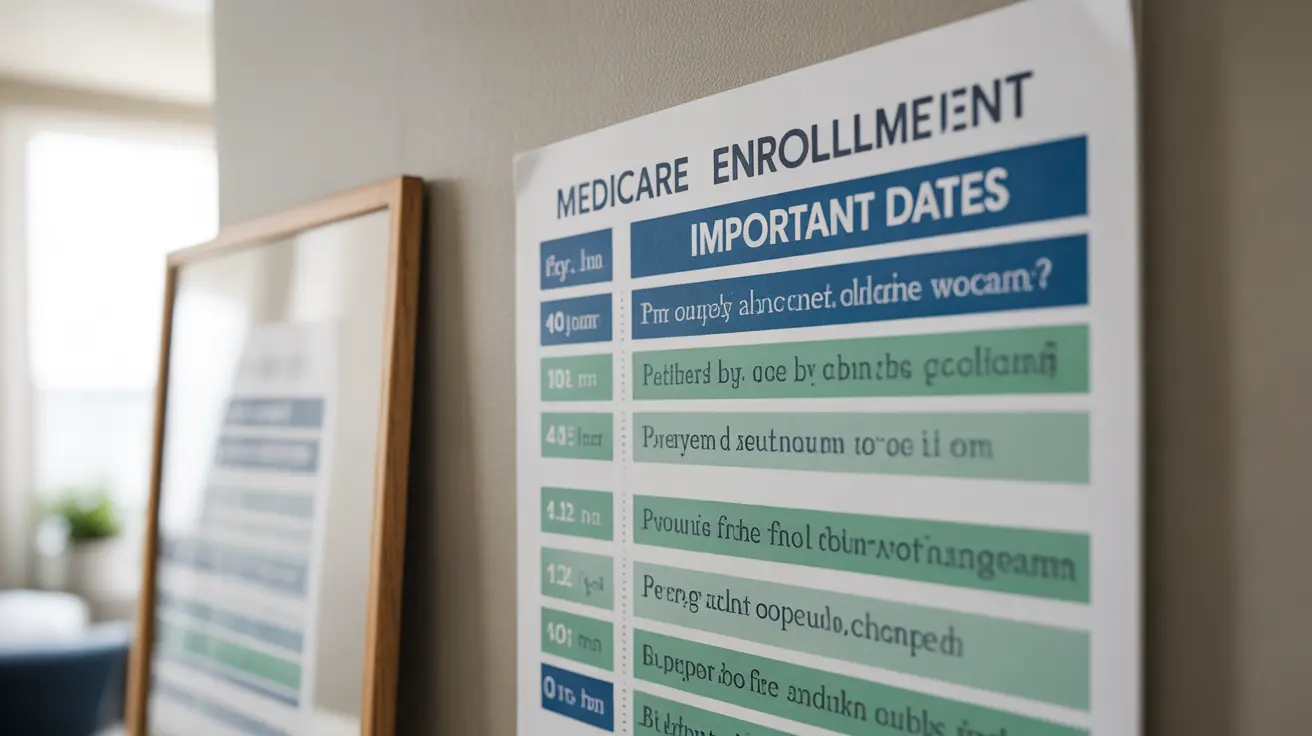Navigating Medicare enrollment can feel overwhelming, but understanding the three main enrollment periods is crucial for making informed healthcare decisions. Each enrollment period serves a specific purpose and comes with its own timing and rules that can significantly impact your coverage and potential costs.
This comprehensive guide breaks down everything you need to know about Medicare's enrollment periods, helping you avoid late penalties and ensure you have the right coverage when you need it.
Initial Enrollment Period (IEP): Your First Opportunity
The Initial Enrollment Period is your first chance to sign up for Medicare Parts A and B. This seven-month window includes:
- Three months before your 65th birthday month
- Your birthday month
- Three months after your birthday month
During the IEP, you can enroll in Original Medicare (Parts A and B), Medicare Advantage (Part C), and Medicare prescription drug coverage (Part D). Missing this period could result in permanent late enrollment penalties unless you qualify for a Special Enrollment Period.
Annual Enrollment Period (AEP): Yearly Changes
The Annual Enrollment Period runs from October 15 to December 7 each year. During this time, you can:
- Switch from Original Medicare to Medicare Advantage
- Change from Medicare Advantage to Original Medicare
- Switch between Medicare Advantage plans
- Join, switch, or drop Medicare Part D coverage
Any changes made during AEP take effect on January 1 of the following year. This period is crucial for reviewing and adjusting your coverage based on changing health needs or plan modifications.
Special Enrollment Period (SEP): Flexibility When You Need It
Special Enrollment Periods are triggered by specific qualifying life events, including:
- Moving outside your plan's service area
- Losing employer-based health coverage
- Qualifying for both Medicare and Medicaid
- Moving into or out of a skilled nursing facility
SEPs typically last for two to three months following the qualifying event, though exact timeframes can vary based on the circumstances. This flexibility ensures you can maintain appropriate coverage despite life changes.
Frequently Asked Questions
What are the three main Medicare enrollment periods and when do they occur?
The three main Medicare enrollment periods are: Initial Enrollment Period (IEP), which spans seven months around your 65th birthday; Annual Enrollment Period (AEP), occurring from October 15 to December 7 each year; and Special Enrollment Periods (SEPs), which are triggered by qualifying life events.
How does the Initial Enrollment Period for Medicare work and what happens if I miss it?
The Initial Enrollment Period starts three months before your 65th birthday month, includes your birthday month, and extends three months after. Missing this period without qualifying for an SEP can result in late enrollment penalties and delayed coverage.
What can I do during the Annual Enrollment Period for Medicare plans?
During the Annual Enrollment Period, you can switch between Original Medicare and Medicare Advantage, change Medicare Advantage plans, and join, switch, or drop Medicare Part D prescription drug coverage. Changes take effect January 1.
What qualifies me for a Special Enrollment Period to enroll in or change Medicare coverage?
Special Enrollment Periods are triggered by qualifying events such as moving outside your plan's service area, losing employer coverage, qualifying for Medicaid, or moving into or out of a skilled nursing facility.
How long do I have to enroll in Medicare after losing other health insurance coverage?
After losing other health insurance coverage, you typically have up to 8 months to enroll in Medicare without penalties through a Special Enrollment Period. However, it's recommended to enroll as soon as possible to avoid gaps in coverage.




